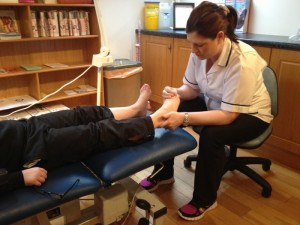Podopaediatrics encapsulates the diagnosis and management of paediatric foot disorders and their associated effects upon the lower limb and the child

It involves assessment of the lower limb and associated axial skeleton in health and disease and the evaluation and treatment of conditions that may be isolated to the foot, or manifestations of systemic disease. This involves a specialist approach to the care of the child separate from that involving assessment and care of the adult.
http://www.podiatrists-chiropodists.com/cpd/files_photos/Podopaediatrics%20Gordon%20F%20Watt/Podopaediatrics%20Introduction%20Cyprus%20(1).pdf
At the first initial treatment you will see the specialist Podiatrist, who in conjunction with the parent/guardian will initially take a full medical history, including birth history and immunizations your child has received.
The Podiatrist will then carry out a physical examination and note the main chief complaint before discussing the management plan with the parent/guardian and child. This will include an outline of what is realistic for the Podiatrist to achieve and equally important, what is expected of your child and you as their parent/guardian in order for these goals to be met.
Some of the examination will be conducted without your child’s knowledge, simply by observation and watching your child play.
Podopaediatrics can help with:
- In-toeing
- Out-toeing
- ‘Tripping’
- Femoral anteversion
- Femoral antetorsion
- Tibial torsion
- Metatarsus adductus
- Genu Varum
- Perthes disease
- Knocked knees
- Talipes equinovarus
- Flat feet
- Severs Disease
- Freiburg’s Infarction
- Osteochondritis Dissecans